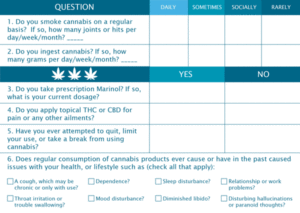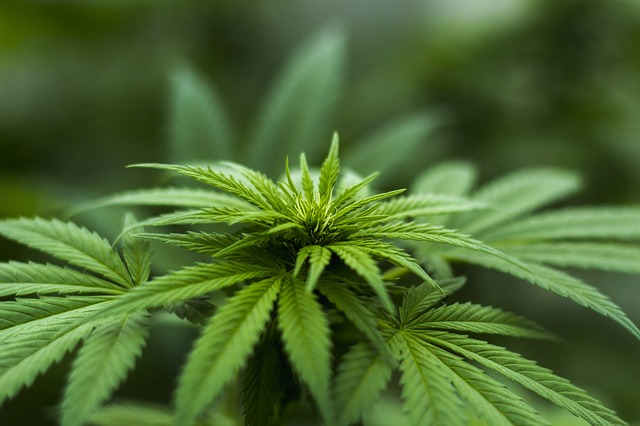Article Summary
Cannabis use has gained increasing popularity among our population of patients.
Dependence on the drug is a real phenomenon and in order to understand its potential benefits or hazards, we must utilize systems to better understand current and past use.
The jury is out on many of its claimed medicinal aspects as well as its adverse effects.
As it pertains to the treatment of chronic pain or cancer-related anorexia, the evidence is substantially in favor of benefit.
Until further research surfaces, as it surely will with the majority of the country now adopting legalization practices, we must continue to seek answers and provide guidance on use in an open nonjudgemental manner with our patient population.
One year preceding legalization of recreational marijuana in the state of California, I noticed a discernible spike in reporting of patients’ current drug use. People from all walks of life now openly express their regular use of smoking, vaping, edibles, tincture, and rubs for ailments that range from sleep and relaxation to pain and anxiety.
What is an illicit substance, classified as Schedule I, the top addictive ranking category under DEA’s schedule of drugs with no medical benefit and high abuse potential4 has now become a common household conversation. No longer a taboo, the “cure-all” marijuana otherwise known as cannabis is as good as aspirin and more effective than Valium, and patients are coming forth with ways it has helped them with their health more so than ever before. Or so they believe.
Examining a patient’s social history:
As part of a general annual exam, doctors are to inquire about a patient’s SOCIAL HISTORY. This usually entails a review of occupation, marital status, substance use, and exercise pattern among other lifestyle habits. In our electronic charting system, there is no section on cannabis use, such that we have for alcohol intake, or cigarette smoking. Even the innocuous addictive substance caffeine has a designated place. When I searched for a reasonable template to adopt into our EMR system for cannabis use, I shockingly realized there is a dearth of templates in the medical literature.
Being that the latest epidemiological data estimates current users in the range of 40 million in North America,5 it is imperative and an obligation as medical doctors to guide our patient population in the proper use of this widely misunderstood herb. So I decided to invent a template for Seaside that adequately captures a patient’s use, misuse, and abuse of cannabis. I strongly believe we have a lot to learn about the medicinal aspects of cannabis from current users coupled with critical analysis of existing research or lack thereof.
Cannabis Check-up as part of SOCIAL HISTORY:

Using this new framework to seek answers:
With this order, we hope to create a framework in which to have a meaningful conversation about the potential benefits and pitfalls of cannabis use. Perhaps many of my recommendations will be ill-founded or of no clinical benefit for my patients. There is no doubt we have the paucity of research on cannabis use as it pertains to health matters compared with other substances such as alcohol or cigarettes. Before more extensive data surfaces, we are unable to make any firm judgments about clinical risks and benefits of chronic use.
How then do we guide you on the quantity that is harmless, or hazardous to your health, such that we understand a 4-ounce glass of wine every night has health benefits vs binge drinking 4 or more glasses in one sitting? That’s not to say we know nothing about cannabis, therefore any conversation is futile. Precisely the opposite; we must start somewhere and continue to seek answers.
Cannabis use disorder:
There should be no doubt that dependence identified by tolerance and withdrawal exists with chronic cannabis use, a fact derived from numerous human and animal studies. (3) Of those who start using cannabis about 1% develop dependence, equalling approximately 2 million of the 14 million current users. (3) Those who claim marijuana is not an addictive substance, clearly don’t understand the basic mechanism of “brain reward system”. Endocannabinoid receptor CB1 in the dopaminergic mesolimbic brain circuit is responsive to the action of THC, the main psychoactive molecule in cannabis, resulting in enhanced release of presynaptic dopamine. This elicits a euphoric reaction, and any such positive association in the brain may lead to persistent use. These receptors undergo down-regulation with chronic consumption, in turn creating a cycle where higher doses are required to achieve the same desired result aka tolerance. In its true sense, cannabis as with all other dopaminergic substances in the brain can be a dependence causing drug.
Marijuana’s carcinogenic properties:
With respect to marijuana’s carcinogenic potential, many small studies have shown associations between various cancers but no definitive data has emerged. A 2006 case-control study conducted at UCLA by Hashibe1 showed no strong association between heavy marijuana smoking with risk of lung or aerodigestive tract cancers. In fact, an inverse relationship was found between concurrent tobacco and marijuana smoking in lung cancer. The authors were hesitant to conclude a protective effect of marijuana use on the development of lung cancer among tobacco users, due to confounding variables and sheer surprise. On the other hand, an earlier study published in Cancer Epidemiology Biomarkers studying a much smaller cohort of 173 persons with head and neck cancers found a dose-dependent relationship between past marijuana smoking and increased risk.(2) These same researchers have also shown that habitual smoking of marijuana leads to increased prevalence of acute and chronic bronchitis, alterations of airway cell structure, increased mucous production and abnormalities of alveolar macrophages (a type of lung immune cells).(7)
Smoke inhalation in any form carries volatile and carcinogenic substances which can lead to mucosal irritation and chronic cough. We advise that those with asthma or other serious pulmonary diseases, or history of cancers of the airways are strongly encouraged to avoid smoke inhalation.
Treatment for cannabis use disorder:
Current data promotes CBT (cognitive behavioral therapy), MET (motivational enhancement therapy) and CM (contingency management) as first-line treatment options for a cessation of use. Pharmacologic remedies are best aimed to treat underlying mood disorder such as anxiolytics or SSRI’s for anxiety or depression, respectively. Marijuana Check-up systems show promise in early detection and primary prevention in teens and adults. These programs demand very little effort, treat users as experts and decision makers regarding their marijuana use, do not label marijuana users as having a problem, and view ambivalence about the drug as normal. They consist of an initial assessment, a brief MET intervention, followed by objective information about marijuana and its effects.(6)
Areas of benefit:
Few of the more common settings where we see cannabis used for medicinal purposes are the following:
Chronic pain: Multiple small and large trials and meta-analysis involving various patient populations across the globe, using various types of cannabis available have found some evidence of efficacy for chronic pain.(8) The cost of treating chronic pain comes with adverse mental health effects and this should be clearly conveyed to a patient once a recommendation to use cannabis for chronic pain is made by a provider. Elderly patients or those with concurrent psychiatric illnesses are most susceptible to untoward mental side effects. Where available, commercially available formulations, tinctures or edibles should be suggested over smoke inhalation for the treatment of chronic pain. This may avoid the potential hazards of a chronic cough and airway immune cell dysfunction, or possibly cancer.
Nausea and poor appetite: Marinol is a commercially available formulation often utilized in the hospital setting for patients with cancer-related anorexia. The typical dosing is 5 mg twice a day before meals.
Anxiety: A top-ranking reason is that many North Americans rely on natural remedies for the treatment of anxiety or depression. There appears to be a bidirectional pattern of endocannabinoid receptor activation by THC compound, whereby low doses may acutely help with anxiety, but high concentrations do the exact opposite. In fact, a common marijuana-related emergency room admission is a panic attack from high dose consumption of marijuana products, particularly oral ingestion as dosing can be unpredictable and uncontrollable. Several studies are underway to find an alternative for mood disorders such as OCD or PTSD though to date, reliable data is lacking to suggest marijuana for management of anxiety spectrum disorders.(9)
In summary, cannabis use has gained increasing popularity among our population of patients. Dependence on the drug is a real phenomenon and in order to understand its potential benefits or hazards, we must utilize systems to better understand current and past use. The jury is out on many of its claimed medicinal aspects as well as its adverse effects. As it pertains to the treatment of chronic pain or cancer-related anorexia, the evidence is substantially in favor of benefit. Until further research surfaces, as it surely will with the majority of the country now adopting legalization practices, we must continue to seek answers and provide guidance on use in an open nonjudgemental manner with our patient population.
In good health,
Dr. Yazdani
Sources:
Marijuana Use and the Risk of Lung and Upper Aerodigestive Tract Cancers: Results of a Population-Based Case-Control Study. Mia Hashibe, et al. Cancer Epidemiology 10, 2016.
Marijuana Use and Increased Risk of Squamous Cell Carcinoma of the Head and Neck. Zuo-Feng Zhang et al. Cancer Epidemiol Biomarkers Prev 1999.
Cannabis Dependence: Its Nature, Consequences, and Treatment Edited by Roger A. Roffman and Robert S. Stephens. Cambridge Univ Press. 2006
https://www.dea.gov/druginfo/ds.shtml
Cannabis use and disorder: Epidemiology, comorbidity, health consequences, and medico-legal status. David Gorelick, UPTODATE
Marijuana Dependence and Its Treatment. Alan J. Budney, et al. Addict Sci Clin Pract. 2007
Respiratory and Immunologic Consequences of Marijuana Smoking. DP Tashkin, et al. J Clinical Pharmacology. Jan 2014.
Overview of the treatment of chronic non-cancer pain. Ellen Rosenquist. UPTODATE.
Cannabinoid-related agents in the treatment of anxiety disorders: current knowledge and future perspectives. Simone Tambaro and Marco Bortolato. Recent Pat CNS Drug Discov. 2012 Apr 1; 7(1): 25–40.

